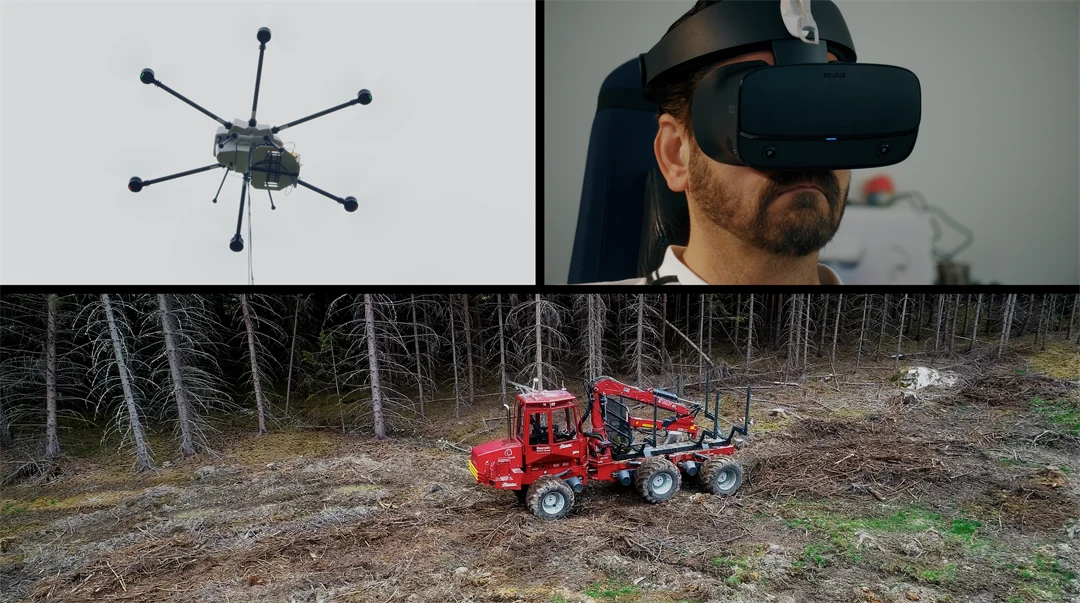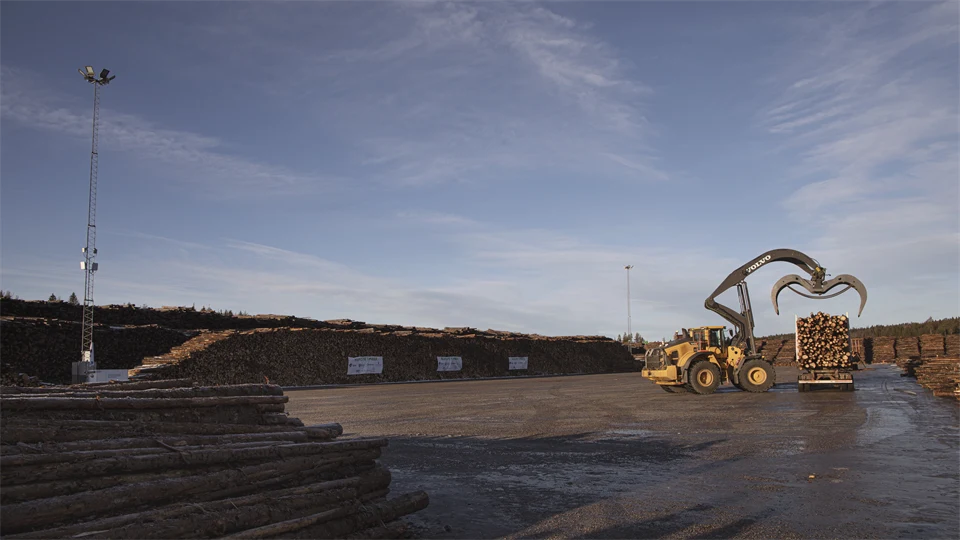Robust wireless infrastructure for remotely controlled timber management
This project focuses on the challenges of 5G connectivity and communication to remotely control timber loaders at timber terminals. The terminals are often isolated and have a demanding environment with large areas of timber piles that limit radio communication.
Background
In Sweden there are about one hundred timber terminals and globally they amount is several thousand. The terminals are usually located in remote locations, which makes efficient staffing of the terminals more difficult. Remotely controlled loading of timber is an attractive solution for timber terminals, but radio coverage in these locations limits the possibilities of remote control as there is rarely a well-developed 5G infrastructure and often many obstacles that limit coverage.
This project is a continuation of the Remote Timber project that was carried out during the period 2019-2022. Remote Timber developed a demonstrator of a remotely controlled timber loader, a Volvo L180H HL 2020 model lift. A demonstration of the remote controlled timber loader was carried out at one of SCA’s timber terminals, which showed that it is possible to remote control timber loading and unloading. The project also showed that there are great opportunities for increased profitability with the help of remote control.
Purpose of the project
Remote Timber showed the benefit and possibility of introducing remote control on timber terminals, but a number of challenges were also identified. This project focuses on the challenges related to 5G connectivity and communication. The often secluded timber terminals have a demanding environment with large areas with timber piles that limit radio communication. The issues that this project will focus on are:
- How can coverage be ensured by assigning suitable 5G towers, for example by securing free visibility, or by maintaining multi-connectivity?
- How can spectrum allocation be minimised to reduce resource use and reduce costs, while ensuring delivery quality?
- How are drone mounted 5G base stations placed out for maximum coverage?
- How can communication be optimised in a RAN architecture (e.g. through programmability and intelligent function)?
Objectives of the project
The project’s goal is to develop a working 5G communication solution for timber loaders that ensures continuous connectivity with low delay and high delivery quality. With the effect of accelerating the implementation of remote control of timber loaders on timber terminals by creating reliability to the 5G network meeting delivery quality requirements. The project has three objectives:
- Build an RAN architecture in a demonstrator environment where data flow can be guaranteed 100 % above the surface through seamless simultaneous connectivity.
- Create 95 % coverage over a demonstrator environment modeled after a timber terminal through drone-mounted base stations.
- Develop a demonstrator that can achieve SLA requirements with a reduced resource use by 50 % compared to Remote Timber.
We are funded by the innovation and research program Avanced Digitalisation.

5G equipped drone remote control forest machine
With the help of a 5G-equipped drone, in practice an airborne mobile mast, a forest machine has for the first time been able to be remotely controlled via 5G technology in terrain with limited connectivity. The test was carried out in a forest area oFacts
Project period
230101—250830
Research centers
Research groups
Project leader




